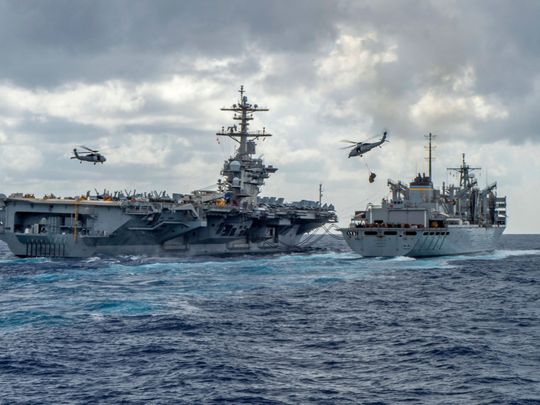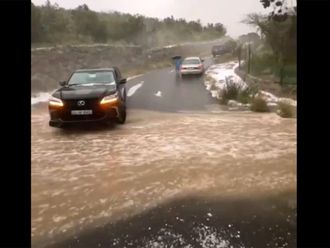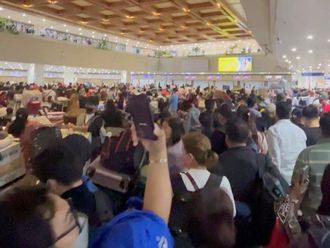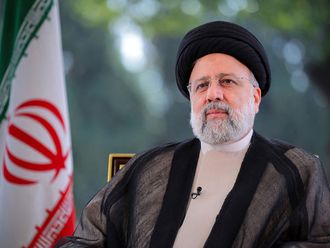
Washinton: President Donald Trump’s order of a US military buildup in the Gulf to counter alleged threats by Iran has many worried about a looming war and others skeptical of Washington’s motivations.
Here’s what has happened:
What assets has the US deployed?
On May 5, Trump’s hawkish National Security Advisor John Bolton announced the deployment of the USS Abraham Lincoln aircraft carrier strike group and a B-52 bomber force to the Gulf.
Days later, the Pentagon added a Patriot missile defense battery and an amphibious assault ship to the deployment
What is the Iran threat?
Iran has not made any direct public threats to spark the US deployment. Washington says it acted on intelligence reports of Iranian actions.
Bolton said the aircraft carrier and bomber deployments were “in response to a number of troubling and escalatory indications and warnings.”
On Wednesday, the US was more specific, saying there was an “imminent” threat to US personnel in Iraq from Iraqi militias allegedly controlled by Tehran. The US State Department ordered the partial evacuation of the US embassy in Baghdad and the consulate in Arbil in response.
Analysts in Washington suspect that Iran’s Islamic Revolutionary Guard Corps could have been plotting an attack in retaliation for the US declaring it a terrorist organisation in April.
Iran subsequently designated all US troops as “terrorists,” effectively making them a potential target.
Have there been any incidents?
One. On Monday, Saudi and United Arab Emirates officials said three oil tankers and a barge anchored at Fujairah near the strategically important entrance to the Gulf were damaged in an alleged “sabotage” operation.
But what caused the relatively minor damage to the vessels and who was behind it remains unknown.
However, US officials believe Iran encouraged Al Houthi militants or Iraq-based Shiite militias to carry out Sunday’s attacks on four tankers near the Strait of Hormuz, two US government sources said on Wednesday.
The sources, who spoke on condition of anonymity and who are familiar with US national security assessments, said they viewed the attacks as a serious provocation by Iran which posed a significant threat to shipping.
Iran rejects the allegation of Iranian involvement and Iranian Foreign Minister Mohammad Javad Zarif has said that “extremist individuals” in the US government were pursuing dangerous policies. No one has claimed responsibility for the tanker attacks.
One source said US government experts believe Iran gave its “blessing” to the operations, which hit two Saudi crude oil tankers, a UAE-flagged fuel bunker barge and a Norwegian-registered oil products tanker near Fujairah, one of the world’s largest bunkering hubs just outside the Strait of Hormuz.
This source said the United States believes the Iranian role has been one of actively encouraging militants to undertake such actions and went beyond simply dropping hints. However, the source indicated the United States does not now have evidence that Iranian personnel played any direct operational role.
Is the US preparing for war?
Secretary of State Mike Pompeo said it is not. “We fundamentally do not seek a war with Iran,” he said Tuesday in Sochi, Russia.
President Donald Trump tweeted Wednesday that expects the pressure on Iran will bring it to the negotiating table.
“I’m sure that Iran will want to talk soon,” he wrote.
At the same time, The New York Times reported last week that Acting Defense Secretary Patrick Shanahan presented the White House with a plan for responding to an Iranian attack that involved sending up to 120,000 American troops to the region.
That is not enough to invade Iran but is enough for an attack from outside its borders.
What do US allies say?
Washington’s European allies have kept their distance, calling for calm and expressing concern over military escalation.
They fear that more pressure on Tehran will compel it to abrogate the international agreement on its nuclear program, the JCPOA, from which Trump withdrew the United States one year ago.
German Foreign Minister Heiko Maas said Berlin “still regards this nuclear agreement as the basis for Iran not having any nuclear weapons in the future, and we regard this as existential for our security.”
British, Netherlands and German forces in the international coalition against Daesh in Iraq and Syria downplayed the immediate threat from Iran.
But Germany and the Netherlands said Wednesday that they were suspending training of soldiers in Iraq due to a “generally heightened” state of alert.
And Spain recalled a frigate accompanying the US carrier task force, explaining that the frigate’s mission was not to take part in actual hostilities with Iran.








